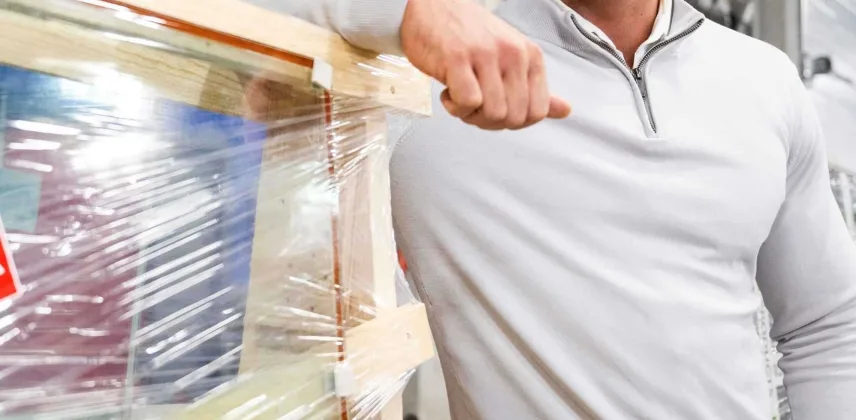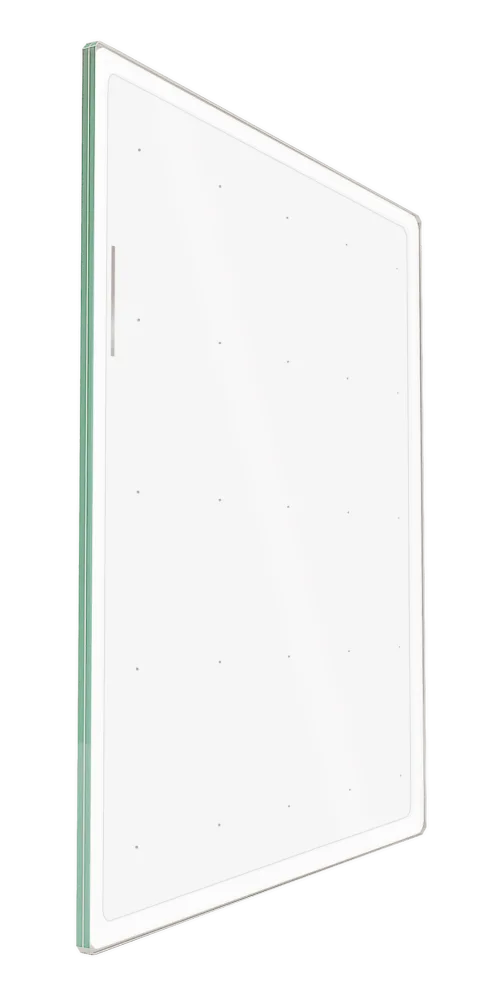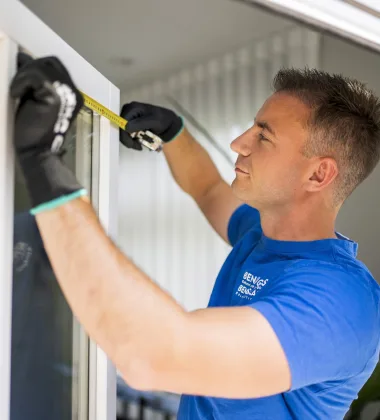
Glass in view | March 13, 2025
BENGglas presents some new test results of the insulation value of vacuum glass with single, double, and triple coating. The latter even achieves a value of Ug 0.34 W/m2K.
IFT Rosenheim has tested the vacuum glass on behalf of producer Landvac. It concerns 8.3 millimeter thick glass, two times 4 millimeters with a 0.3 millimeter vacuum cavity, with a size of 0.5 x 0.5 meters. The microspacers or pillars in the cavity are located at a distance of 55 millimeters from each other.
Test reports vacuum glass up-to-date
BENGglas received ‘the most up-to-date test reports’ in February. Youri Creutzberg, the driving force behind BENGglas at the family business Giga-Glas! from Goirle, is pleased with the test values achieved. ‘The glass has been tested according to the most recent standards and norms, EN674 and ISO 19916-1, and the results are better than expected. For example, the double coating scores a U-value of 0.39 and the single coating a U-value of 0.41 W/m2K. But where the real scoop lies is in the tested U-value of the triple silver coating. With this coating, we achieve no less than a U-value of 0.34 W/m2K.

‘Skepticism about our results’
‘There has sometimes been some skepticism from the market about the U-values we achieved,’ continues Creutzberg. ‘For instance, the glass might not have been tested or not tested according to the right and correct standards. With these results, we once again prove the opposite. Not only are we making a great step forward with this. This is also good news for the sustainability of the Netherlands and the vacuum glass market in general.’
What is vacuum glass?
Vacuum glass consists of double glazing with a small cavity that is vacuum sealed. To withstand the pressure difference created by the vacuum, small spacers, known as microspacers, are placed between the panes. A valve may also be visible at the point where the glass has been vacuum sealed. With the double pane and the small cavity, the glass is limited in weight and, due to its minimal thickness of around 8 millimeters, it often fits into existing frames. The performance is comparable to or even better than triple glazing.

Source: Glass in view
Date: March 15, 2025
Go to the original article


